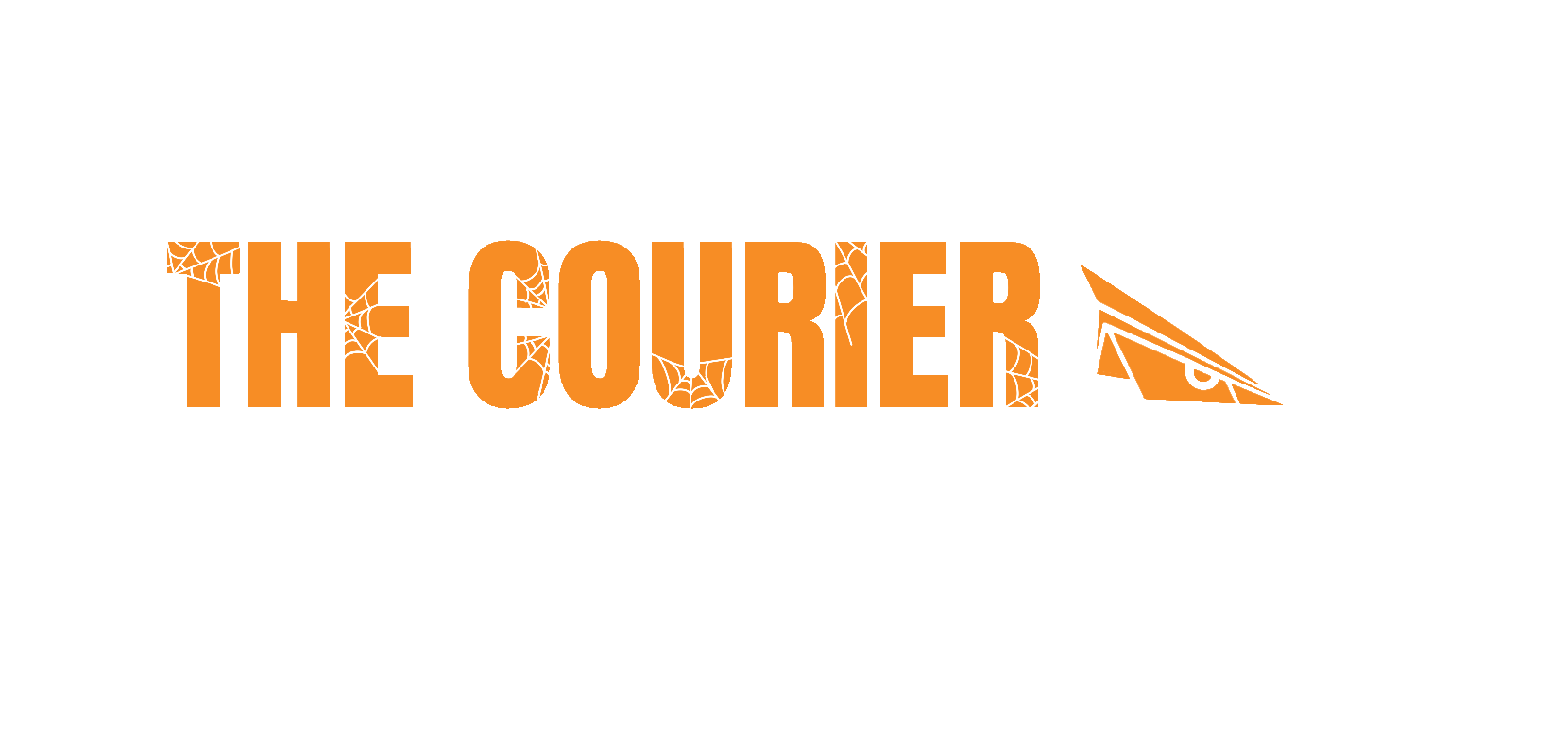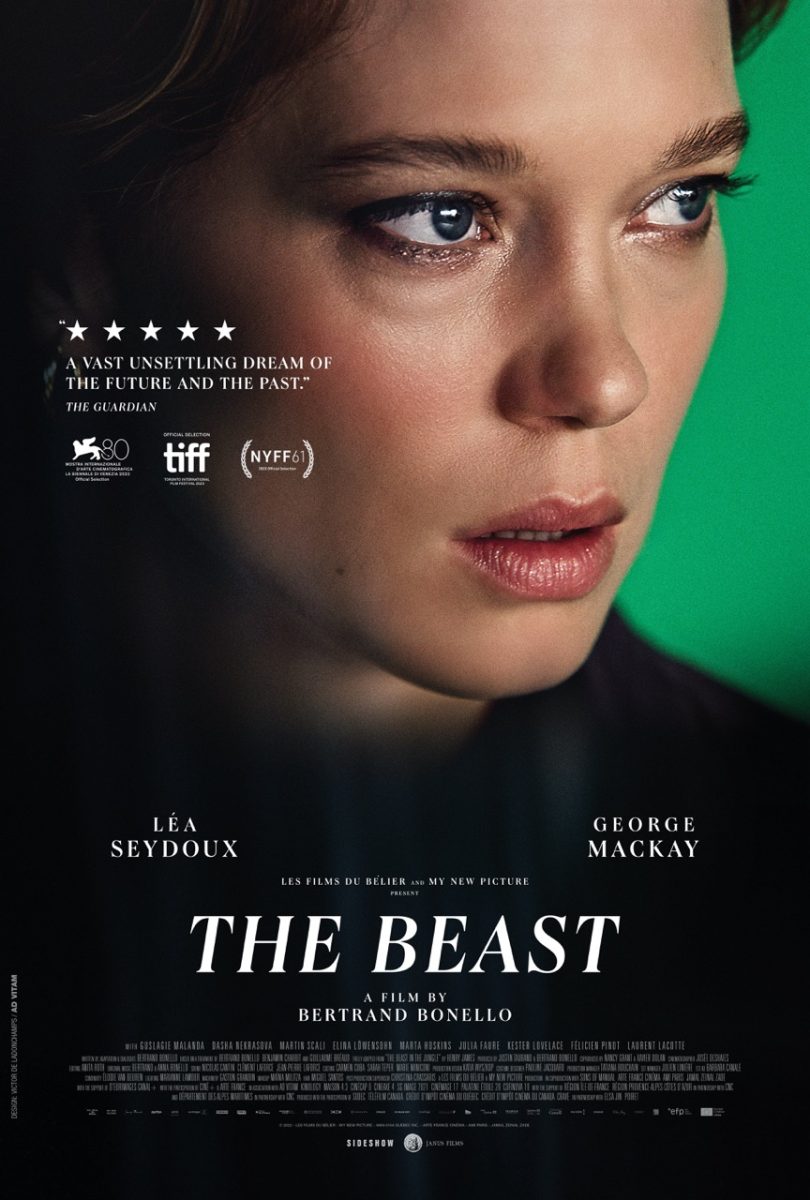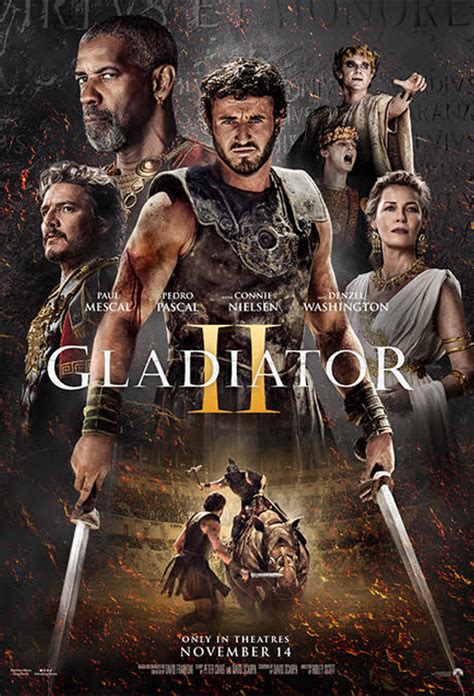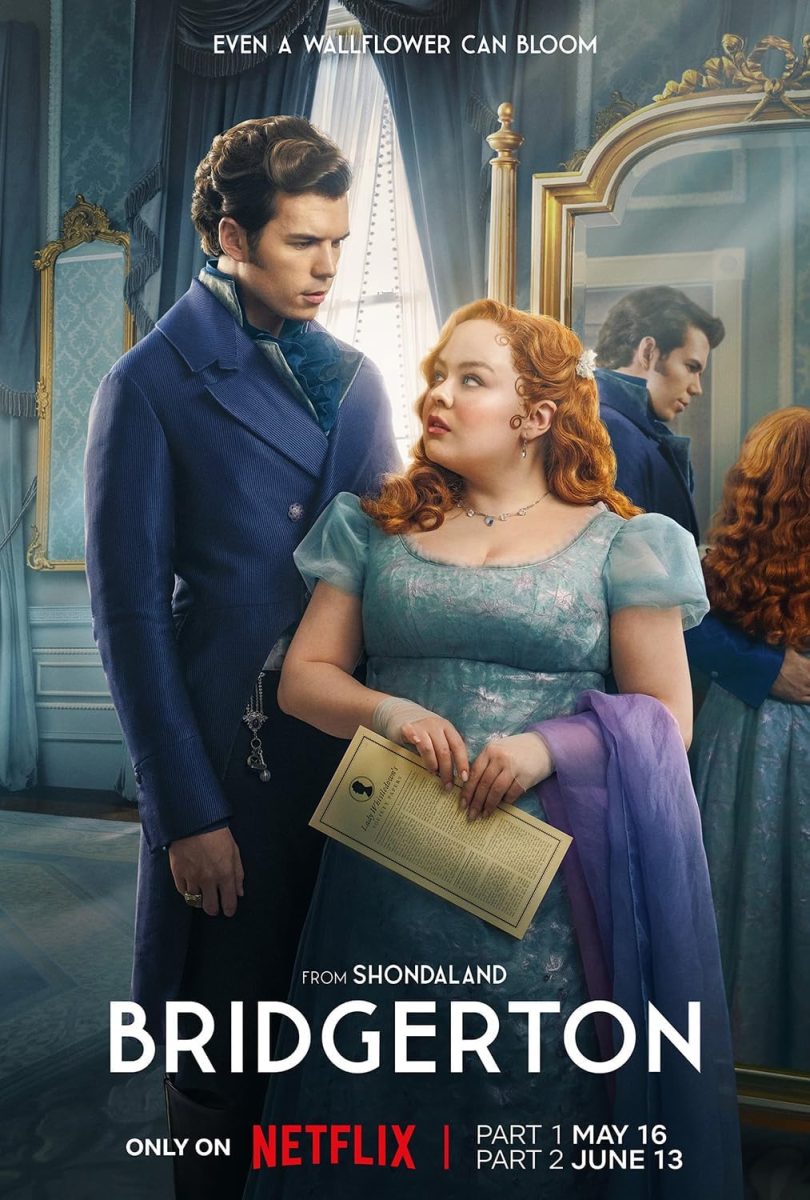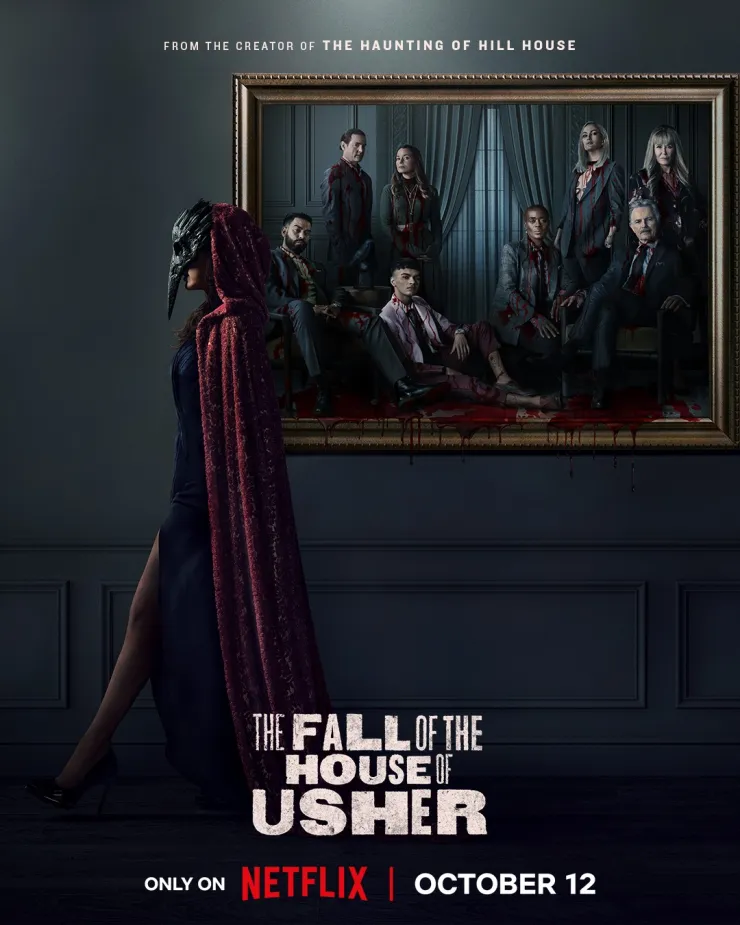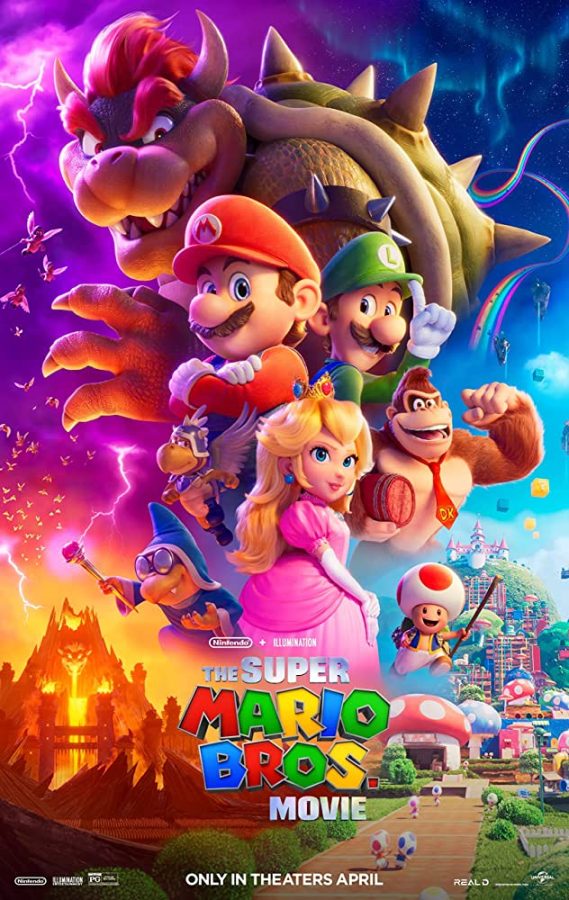When looking at the painting, The Son of Man by René Magritte, you know something is not quite right. The viewer’s gaze is obstructed by the presence of the apple, and as a result, they are filled with a sense of unease and anticipation. The most logical is a face, but you aren’t absolutely sure and so you begin to question the odd hat, the too big suit, and the eerie ocean setting, establishing an uneasy sense that things are not what they seem. The difficulty lies in discerning what is real and what is not.
This is the plight of every viewer who watches the French movie “La Bête” (The Beast). Released in 2023, this Bertrand Bonello film is the ultimate mind trip. It is set over three distinct periods in 1910, 2014 and 2044. Yet, the inevitable interactions between the characters Gabrielle (Léa Seydoux) and Louis (George McKay) remain pre-determined.
The movie is based on Henry James’ 1903 novella, “The Beast in the Jungle.” The main character John has an intense fear that something terrible will upend his life, so he rebukes the mutual affection of his romantic interest, May. The ‘beast’ turns out to be his anticipatory fear of chaos, which renders his life obsolete by causing him to avoid his fears. In an interesting twist, Bonello turns Gabrielle into the one who carries this fear.
The movie starts in the year 2044, when AI has taken over the world (an addition that was obviously not in James’ original novella). In this film’s setting, AI once saved the planet from catastrophic climate change, but it now views humans as “irrational.” Gabrielle, who was once a piano player in 1910 and then a struggling actress in 2014, is relegated to monitor software temperatures. In an effort to have a meaningful career, she undergoes a DNA purification process that would remove ‘irrationality’ and ‘emotionality.’ This process involves viewing buried memories of her own past lives that make her an irrational being.
As a result, a montage of Gabrielle’s reincarnations weave in and out of the story in a confusing and dizzying way, with common motifs acting as a connection between them. The flashbacks could have been edited to make more narrative sense, especially in the first half. The movie picks up much more in the later half. Perhaps this is reflective of how Gabrielle experienced her own past lives. Yet, it caused the ending to do much of the heavy lifting in explaining the events. But like Gabrielle, it is toward the end where we make sense of this confusing DNA process.
Although this film is extremely difficult to understand at times, perhaps to reflect Gabrielle’s internal struggles (I was confused almost the entirety of the first half), it has a very relevant message underneath the surrealist plot. In many ways, this film is the ideal of an ‘Art Film’ (an experimental and esoteric cinematic experience). It is extremely culturally relevant and crucial to understand our essential desire to experience love and connection, which the presence of new technology can greatly inhibit. In fact, Bonello uses these alternative realities to make a poignant commentary about the importance of emotionality, and most importantly, uses gender to cleverly express it.
The performances of Seydoux and McKay are crucial in portraying the different cultural and emotional states of each era. The camerawork is also reflective of each time period, where the almost airbrushed 1910 frames are traded for a heavily pixelated and jutting 2014 camera, which helps to transport the viewer to the different periods. It is clear that all of the cast and crew know how to make a movie; they are successful in creating the ultimate AI arthouse film.
The more you examine this film, the more threads you uncover. It is a film that keeps you on your toes, but as Bonello is trying to show, it is better to go through all of the confusion, frustration and eventual understanding than to just run away from them. After all, apathy is the most dangerous “Beast.” Without our human emotions, the Beast will consume us all.
